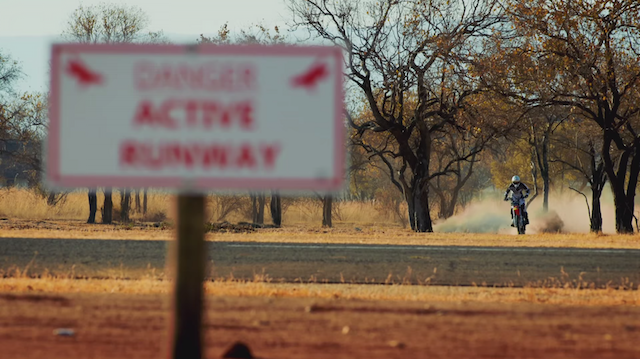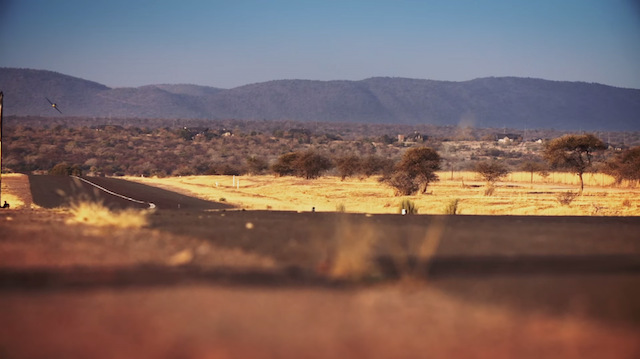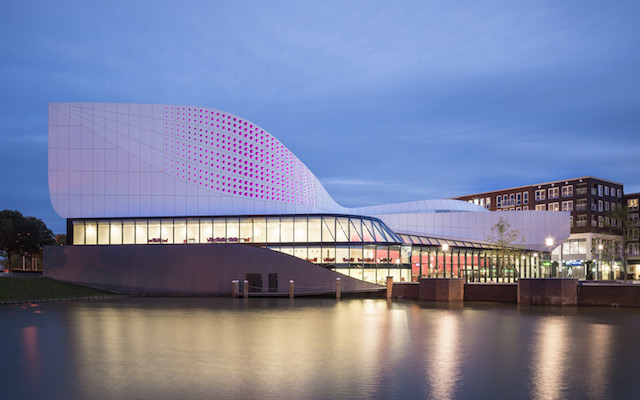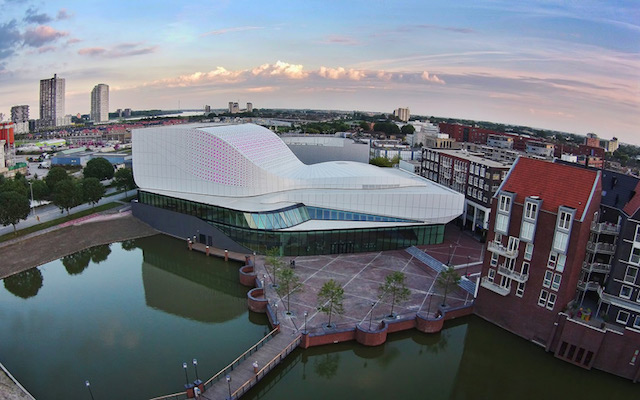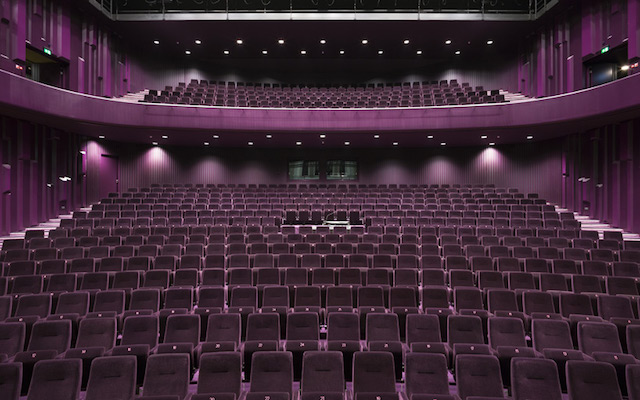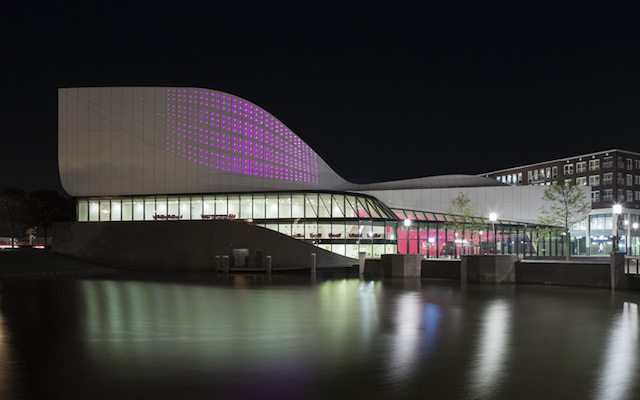Picpendant: battling copyright infringement, twitter spam and false info with snarky corrections
Posted in: UncategorizedPicpendant is twitter’s photo superhero, swooping down on the countless “Funnypix” “Amazingpix” “”Historyinpix” and similar spammy twitter accounts, that everyone and their aunt can’t help but retweet. Please don’t retweet that crud, you are only helping spammers get a foothold. The pic-bots bother me, not just for their lazy scraping and copyright infringement, but also for “polluting” otherwise sensible streams with (often false) junk.
Healthy Cat: ökocat litter "Meet Rufus" (2014) 3:00 (USA)
Posted in: UncategorizedAudi Q3 "Tight parking" (2014) :45 (Canada)
Posted in: UncategorizedNot sure how it is in other countries but in North America, Audi seems to be the advertising vehicle of choice. I’m not sure why except for the fact that it is expensive and advertising people like to conform.
Facing Facts
Posted in: UncategorizedConfronting inequality in India.
by
From Adbusters #116: Blueprint for a New World, Part 5: Politico

A 2011 census revealed that half of all Indian households have to practice open defecation.
Nearly half of all Indian children are underweight (compared to 25 percent in sub-Saharan Africa), and as Amartya Sen and Jean Drèze point out, despite a rise in literacy rates, “a large proportion” of them “learn very little at school.” Almost all Indians buy health serves from private providers, exposing themselves to crippling debt as well as quackery. Inequalities have widened between classes, regions and rural and urban areas. More worryingly, they seem unbridgeable owing to the lack of adequate education and public healthcare. Not surprisingly, poverty declines very slowly in India, slower than in Nepal and Bangladesh, and unevenly. Calorie and protein intake among the poor has actually dropped.
“India today,” the historian Ramachandra Guha writes, “is an environmental basket-case; marked by polluted skies, dead rivers, falling water-tables, ever-increasing amounts of untreated wastes, disappearing forests.” Meanwhile, as Sen and Drèze write, the largely corporate-owned media, deeply indifferent to poverty and inequality, and reflexively intolerant of any remedial action by the government, produce “an unreal picture of the lives of Indians in general” by celebrating the fame and wealth of billionaires and cricket and Bollywood stars.
By 2010 India’s one hundred wealthiest people had increased their combined worth to $300 billion, a quarter of the country’s GDP. Recent corruption scandals involving the sale of billions of dollars’ worth of national resources such as mines, forests, land, water and telecom spectrums reveal that crony capitalism and rent-seeking, rather than entrepreneurial dynamism and innovation in a free market, are the real engines of India’s economic growth.
Furthermore, to a large extent this growth does not create jobs — an alarming fact about an overwhelmingly youthful country that adds 12 million to the workforce each year and whose present economic pattern obliges it to move many millions more to urban areas from a crisis-ridden agricultural sector where hundreds of thousands of farmers have committed suicide in recent years. According to a widely cited report by Michael Walton, an economist at Harvard University, the quality and distribution of India’s rate of GDP growth are structurally “disequalizing,” i.e., causing more inequality. It’s not only that India isn’t “overflowing with Horatio Alger stories,” as The Wall Street Journal put it. It is also developing all the ingredients necessary for a Latin American-style oligarchy.
Rising social unrest is making an insecure Indian elite gravitate to such hard-line leaders as the current Indian prime minister Narendra Modi, whose well-advertized toughness with labor unions and PR-enhanced business-friendliness make him the preferred choice of many corporate leaders, economists and commentators. The Columbia University economist Jagdish Bhagwati, for instance, has described Modi as a “positive role model” with “an unblemished record of personal integrity.” When he was the chief minister of Gujarat, Modi was allegedly complicit in the killing of over a thousand Muslims there in 2002 and was barred from travelling to the United States as a result. But he still embodies managerial efficiency and iron discipline to those disturbed by the political assertiveness of the poor and the disaffected.
In fact, the political energies of the hundreds of millions of the poor and disaffected are still underdeployed. Could they lead to a more accountable and responsive state and, in the long run, to a more egalitarian and democratic India? The poor in India still have a great “capacity to aspire,” as the social anthropologist Arjun Appadurai claims, and their collective efforts can make the state more accountable and efficient.
Many observers of India are generally impressed by the procedures of Indian democracy, with its routine elections. But as Sen and Drèze suggest, “the success of a democracy depends ultimately on the vigor of its practice.” Certainly, creeping authoritarianism of the kind witnessed in India can make political reform from below seem more urgent than economic engineering from the top. “Educate, agitate, and organize,” the disenchanted low-caste author of India’s constitution B.R. Ambedkar exhorted. Many more Indians will have to exercise these democratic rights if they wish to transform the profoundly damaging elitist character of Indian society and politics.
F.C.C. Delays Auction of TV Airwaves for Mobile
Posted in: UncategorizedDealBook: Roku, Video Streaming Service, Is Said to Consider I.P.O.
Posted in: UncategorizedBusiness Briefing: NBCUniversal to Settle Suit Over Unpaid Interns
Posted in: UncategorizedOpen Source: Iranian Photojournalist Reportedly Detained After Covering Protest Against Acid Attacks
Posted in: UncategorizedAccessible Swinging Backpacks – The wolffepack Can Be Swung Around To Your Chest (GALLERY)
Posted in: UncategorizedConsuming the News: Americans Don’t Live in Information Cocoons
Posted in: UncategorizedDirtbike Backflips over Aerobatic Plane
Posted in: UncategorizedAprès des années de prouesses techniques et sportives, Redbull nous prouve une de fois de plus que la folie n’a aucunes limite. La réunion de Nick de Wit et Glen Dell ne déroge pas à la règle et met en scène un magnifique backflip en moto au dessus d’un avion de voltige.
How Brands Should React to Gamergate: Don't
Posted in: UncategorizedHere is the most crucial thing a marketer needs to know about so-called Gamergate.
“You cannot win. This is a lose-lose situation.”
That’s according to one advertiser who has been caught up in an ongoing fiasco that’s pitted various factions of gamers against one another, and against publishers and advertisers.
Here's The Avengers 2 Trailer, Recut as a Super Ominous Ad for Pinocchio
Posted in: Uncategorized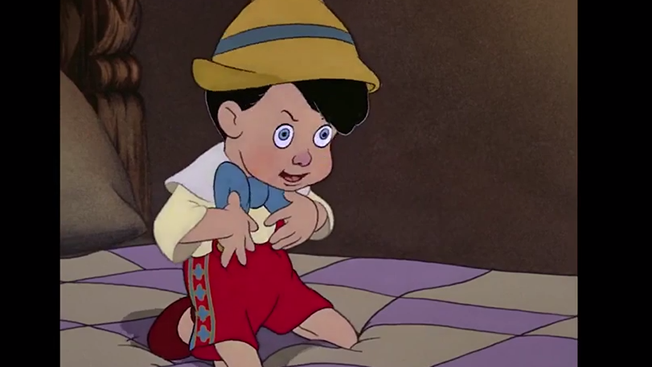
Late at night, when Wes Craven and David Cronenberg sit around trying to scare each other at the Horror Movie Directors’ Spooky Mansion of Fear (look it up, it’s a thing), I’m pretty sure the most frightening movie either of them can think of is Disney’s disturbing 1940 classic, Pinocchio.
A dark meditation on vice, morality, whale digestion and the human experience, Pinocchio is unsettling and bleak on a level you just don’t see in modern movies aimed at kids.
So it makes total sense that the ominous audio from the first Avengers: Age of Ultron trailer could be reworked seamlessly into a creeptastic teaser for Pinoccio, source of the “I’ve Got No Strings” tune intoned by James Spader as the villainous Ultron.
Check out Nerd Reactor’s sterling work on the mashup below, followed by the real trailer.
Walt Disney’s truly disturbing 1940 cartoon version of Carlo Collodi’s Pinocchio. So it makes total sense that the audio for the creeptastic trailer to Avengers: Age of Ultron…
Honestly, the mashup merely includes the top scariest moments. They don’t even have the bit where the Coachman goes from kindly old weirdo to Satanic monster and his grin fills the frame.
If anyone needs me, I’m under my desk.
![]()
It's Time to Dispel Common Myths About Super Bowl Advertising
Posted in: UncategorizedEven in an age when DVRs make time-shifting a regular part of the average American’s life, the Super Bowl is one event where advertising is welcomed. A survey done last year of 1,000 people by ad agency Venables Bell & Partners found that 78% of people look forward to the Super Bowl for the ads more than the game.
But the rise of digital advertising, and video in particular, has changed the way Super Bowl advertising is done. No longer is the Super Bowl a one-day event; it is an advertising extravaganza that starts weeks before kickoff and lasts weeks after. That same survey found that 70% of respondents said they would focus on the ads even before the game was played, a sure sign of how much digital has changed the rules for Super Bowl advertising.
This change has come fast though — within the last five years — which means there are still misunderstandings about the new age of Super Bowl advertising. Here are the five most common myths and why we should stop promoting them:
3D-Printed Mud Houses – The Wasp 3D Printers Construct Low-Cost Mud Houses (GALLERY)
Posted in: Uncategorizedadam&eveDDB Shows Beauty of ‘Ice Bubbles’ for Sony
Posted in: Uncategorizedadam&eveDDB has a new broadcast spot promoting Sony’s 4K Ultra HD TV with a new spot called “Ice Bubbles.”
The 60-second spot takes a look at the majestic beauty of bubbles freezing in mid-air. As the bubbles freeze, intricate crystalline patterns form inside them, and despite their almost unearthly beauty, the spot was purportedly shot without the use of special effects. It’s a clever (and visually stunning) way to reflect the kind of detail captured in Sony’s 4K Ultra HD TV.
“We were blown away by the beauty of the intricate patterns that the freezing of the bubbles’ surface was creating at very low temperature. The feather, flower and star ice shapes were so delicate and mesmerizing when they reflected light,” Leila de Blinkk told Adweek. “To bring out all these details in 4K was to almost discover a new world, that we didn’t suspect existed.” (more…)
New Career Opportunities Daily: The best jobs in media.
Sony Advertises Its 'Most Beautiful' TV Picture With One of Its Most Beautiful Ads Ever
Posted in: Uncategorized
adam&eveDDB and directors Leila and Damien de Blinkk headed to Canada to film this remarkable new spot for Sony’s 4K Ultra HD TV. And indeed, not since Jean-Claude Van Damme and Coors Light have we seen such a noteworthy ad about frozen balls.
Those in question here are blown bubbles that freeze in midair in the icy weather. We see natural crystal-like structures form, with no special effects used. It’s lovely stuff—and surely that much more mind-blowing when actually viewed on a 4K Sony TV. The soundtrack is Josef Salvat’s version of Rihanna’s “Diamonds.”
“We were blown away by the beauty of the intricate patterns that the freezing of the bubbles’ surface was creating at very low temperature. The feather, flower and star ice shapes were so delicate and mesmerizing when they reflected light,” says Leila de Blinkk. “To bring out all these details in 4K was to almost discover a new world, that we didn’t suspect existed.”
“This time we wanted to create something beautiful that truly reflects the experience of watching a Sony 4K Ultra HD TV—being able to put these fleeting moments of natural beauty on film felt like a fitting successor to all we’ve done before,” adds Gildas Pelliet, head of marketing at Sony Europe.
![]()
Theater De Stoep by UNStudio
Posted in: UncategorizedLe 9 octobre dernier, le Théâtre De Stoep de la ville de Spijkenisse aux Pays-Bas a ouvert ses portes. Designé par UNStudio, la construction de 5800 m² dispose d’un auditorium pouvant accueillir 650 personnes, et une plus petite salle de 200 places. A découvrir en images dans la suite.













